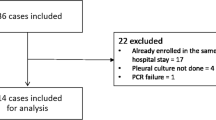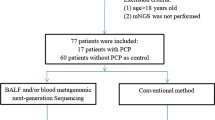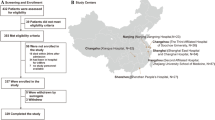Abstract
The aim of this study was to use a 16S rDNA sequencing method in combination with conventional culture in patients with parapneumonic effusions (PPE) to evaluate the methods, study the microbiological spectrum, and examine the presence of bacteria within the different stages of PPE. Adults with community-acquired pneumonia (CAP) and PPE (n = 197) admitted to the Departments of Infectious Diseases at four hospitals in Stockholm County during 2011–2014 were prospectively studied. All patients underwent thoracentesis. Twenty-seven non-infectious pleural effusions were used as controls. The pleural samples were analyzed with culture, 16S rDNA sequencing, pH, glucose, and lactate dehydrogenase. Microbiological etiology was found in 99/197 (50%) of the patients with mixed infections in 20 cases. The most common pathogens were viridans streptococci (n = 37) and anaerobic bacteria (n = 40). Among the 152 patients with both methods performed, 26/152 (17%) and 94/152 (62%) had bacteria identified with culture and 16S rDNA sequencing respectively (p < 0.001). In 24/26 (92%) culture-positive cases, the same organism was identified by 16S rDNA. All controls were negative in both methods. Among the patients with complicated PPE and complete sampling, bacteria were found in 69/74 patients (93%), all detected with 16S rDNA sequencing, compared to 23/74 (31%) culture-positive samples (p < 0.001). Compared with culture, 16S rDNA sequencing substantially improved the microbiological yield, a microbiological diagnosis was achieved in almost all patients with complicated PPE, and the specificity seemed to be high. 16S rDNA sequencing should be used together with culture in patients with PPE to guide antibiotic therapy.

Similar content being viewed by others
References
Koegelenberg CF, Diacon AH, Bolliger CT (2008) Parapneumonic pleural effusion and empyema. Respiration 75(3):241–250. https://doi.org/10.1159/000117172
Davies HE, Davies RJ, Davies CW, Group BTSPDG (2010) Management of pleural infection in adults: British Thoracic Society pleural disease guideline 2010. Thorax 65(Suppl 2):ii41–ii53. https://doi.org/10.1136/thx.2010.137000
Light RW, Girard WM, Jenkinson SG, George RB (1980) Parapneumonic effusions. Am J Med 69(4):507–512
Foster S, Maskell N (2007) Bacteriology of complicated parapneumonic effusions. Curr Opin Pulm Med 13(4):319–323. https://doi.org/10.1097/MCP.0b013e3281864691
Meyer CN, Rosenlund S, Nielsen J, Friis-Moller A (2011) Bacteriological aetiology and antimicrobial treatment of pleural empyema. Scand J Infect Dis 43(3):165–169. https://doi.org/10.3109/00365548.2010.536162
Ahmed RA, Marrie TJ, Huang JQ (2006) Thoracic empyema in patients with community-acquired pneumonia. Am J Med 119(10):877–883. https://doi.org/10.1016/j.amjmed.2006.03.042
Sahn SA (2007) Diagnosis and management of parapneumonic effusions and empyema. Clin Infect Dis 45(11):1480–1486. https://doi.org/10.1086/522996
Everts RJ, Reller LB (1999) Pleural space infections: microbiology and antimicrobial therapy. Semin Respir Infect 14(1):18–30
Mohanty S, Kapil A, Das BK (2007) Bacteriology of parapneumonic pleural effusions in an Indian hospital. Trop Dr 37(4):228–229. https://doi.org/10.1258/004947507782333152
Insa R, Marin M, Martin A, Martin-Rabadan P, Alcala L, Cercenado E, Calatayud L, Linares J, Bouza E (2012) Systematic use of universal 16S rRNA gene polymerase chain reaction (PCR) and sequencing for processing pleural effusions improves conventional culture techniques. Medicine (Baltimore) 91(2):103–110. https://doi.org/10.1097/MD.0b013e31824dfdb0
Gollomp K, Rankin SC, White C, Mattei P, Harris MC, Kilpatrick LE, Sheffler-Collins S, McGowan KL, Shah SS (2012) Broad-range bacterial polymerase chain reaction in the microbiologic diagnosis of complicated pneumonia. J Hosp Med 7(1):8–13. https://doi.org/10.1002/jhm.911
Saglani S, Harris KA, Wallis C, Hartley JC (2005) Empyema: the use of broad range 16S rDNA PCR for pathogen detection. Arch Dis Child 90(1):70–73. https://doi.org/10.1136/adc.2003.042176
Menezes-Martins LF, Menezes-Martins JJ, Michaelsen VS, Aguiar BB, Ermel T, Machado DC (2005) Diagnosis of parapneumonic pleural effusion by polymerase chain reaction in children. J Pediatr Surg 40(7):1106–1110. https://doi.org/10.1016/j.jpedsurg.2005.03.057
Blaschke AJ, Heyrend C, Byington CL, Obando I, Vazquez-Barba I, Doby EH, Korgenski EK, Sheng X, Poritz MA, Daly JA, Mason EO, Pavia AT, Ampofo K (2011) Molecular analysis improves pathogen identification and epidemiologic study of pediatric parapneumonic empyema. Pediatr Infect Dis J 30(4):289–294. https://doi.org/10.1097/INF.0b013e3182002d14
Krenke K, Sadowy E, Podsiadly E, Hryniewicz W, Demkow U, Kulus M (2016) Etiology of parapneumonic effusion and pleural empyema in children. The role of conventional and molecular microbiological tests. Respir Med 116:28–33. https://doi.org/10.1016/j.rmed.2016.05.009
Utine GE, Pinar A, Ozcelik U, Sener B, Yalcin E, Dogru D, Menemenlioglu D, Gur D, Kiper N, Gocmen A (2008) Pleural fluid PCR method for detection of Staphylococcus aureus, Streptococcus pneumoniae and Haemophilus influenzae in pediatric parapneumonic effusions. Respiration 75(4):437–442. https://doi.org/10.1159/000107741
Le Monnier A, Carbonnelle E, Zahar JR, Le Bourgeois M, Abachin E, Quesne G, Varon E, Descamps P, De Blic J, Scheinmann P, Berche P, Ferroni A (2006) Microbiological diagnosis of empyema in children: comparative evaluations by culture, polymerase chain reaction, and pneumococcal antigen detection in pleural fluids. Clin Infect Dis 42(8):1135–1140. https://doi.org/10.1086/502680
Maskell NA, Batt S, Hedley EL, Davies CW, Gillespie SH, Davies RJ (2006) The bacteriology of pleural infection by genetic and standard methods and its mortality significance. Am J Respir Crit Care Med 174(7):817–823. https://doi.org/10.1164/rccm.200601-074OC
Kommedal O, Kvello K, Skjastad R, Langeland N, Wiker HG (2009) Direct 16S rRNA gene sequencing from clinical specimens, with special focus on polybacterial samples and interpretation of mixed DNA chromatograms. J Clin Microbiol 47(11):3562–3568. https://doi.org/10.1128/JCM.00973-09
Vondracek M, Sartipy U, Aufwerber E, Julander I, Lindblom D, Westling K (2011) 16S rDNA sequencing of valve tissue improves microbiological diagnosis in surgically treated patients with infective endocarditis. The Journal of infection 62(6):472–478. https://doi.org/10.1016/j.jinf.2011.04.010
Light RW (1995) A new classification of parapneumonic effusions and empyema. Chest 108(2):299–301
Kawanami T, Fukuda K, Yatera K, Kido M, Mukae H, Taniguchi H (2011) A higher significance of anaerobes: the clone library analysis of bacterial pleurisy. Chest 139(3):600–608. https://doi.org/10.1378/chest.10-0460
Munoz-Almagro C, Gala S, Selva L, Jordan I, Tarrago D, Pallares R (2011) DNA bacterial load in children and adolescents with pneumococcal pneumonia and empyema. Eur J Clin Microbiol Infect Dis 30(3):327–335. https://doi.org/10.1007/s10096-010-1086-9
Johansson N, Kalin M, Giske CG, Hedlund J (2008) Quantitative detection of Streptococcus pneumoniae from sputum samples with real-time quantitative polymerase chain reaction for etiologic diagnosis of community-acquired pneumonia. Diagn Microbiol Infect Dis 60(3):255–261
Acknowledgements
The authors thank the staff at Danderyd Hospital and Södersjukhuset for sample collection of the patients with parapneumonic effusion admitted to their units, the Lung-Allergy Clinic staff (Gunnel de Forest, Mari Pettersson, Camilla Mattsson, and Ulli Klaile-Hammarberg) for identifying and sampling the control group, and Christian Giske, Professor, Department of Laboratory Medicine, Division of Clinical Microbiology, Karolinska Institutet, for valuable comments on the manuscript.
Funding
This work was supported by ALF Grants, Stockholm County [grant number 20110088].
Author information
Authors and Affiliations
Corresponding authors
Ethics declarations
Written informed consent was obtained from enrolled patients or from their nearest relative. The study was approved by the regional ethics committee, Stockholm, Sweden, nr 2010/2066-31.
Conflict of interest
The authors declare that they have no conflict of interest.
Additional information
Publisher’s note
Springer Nature remains neutral with regard to jurisdictional claims in published maps and institutional affiliations.
Summary of the article’s main point
Among patients with parapneumonic effusions, bacteria were often detected in pleural fluid, with viridans streptococci and anaerobic species as the most frequently findings. Compared with culture, 16S rDNA sequencing improved the microbiological yield and the specificity seemed to be high.
Electronic supplementary material
ESM 1
(DOC 61 kb)
Rights and permissions
About this article
Cite this article
Johansson, N., Vondracek, M., Backman-Johansson, C. et al. The bacteriology in adult patients with pneumonia and parapneumonic effusions: increased yield with DNA sequencing method. Eur J Clin Microbiol Infect Dis 38, 297–304 (2019). https://doi.org/10.1007/s10096-018-3426-0
Received:
Accepted:
Published:
Issue Date:
DOI: https://doi.org/10.1007/s10096-018-3426-0




